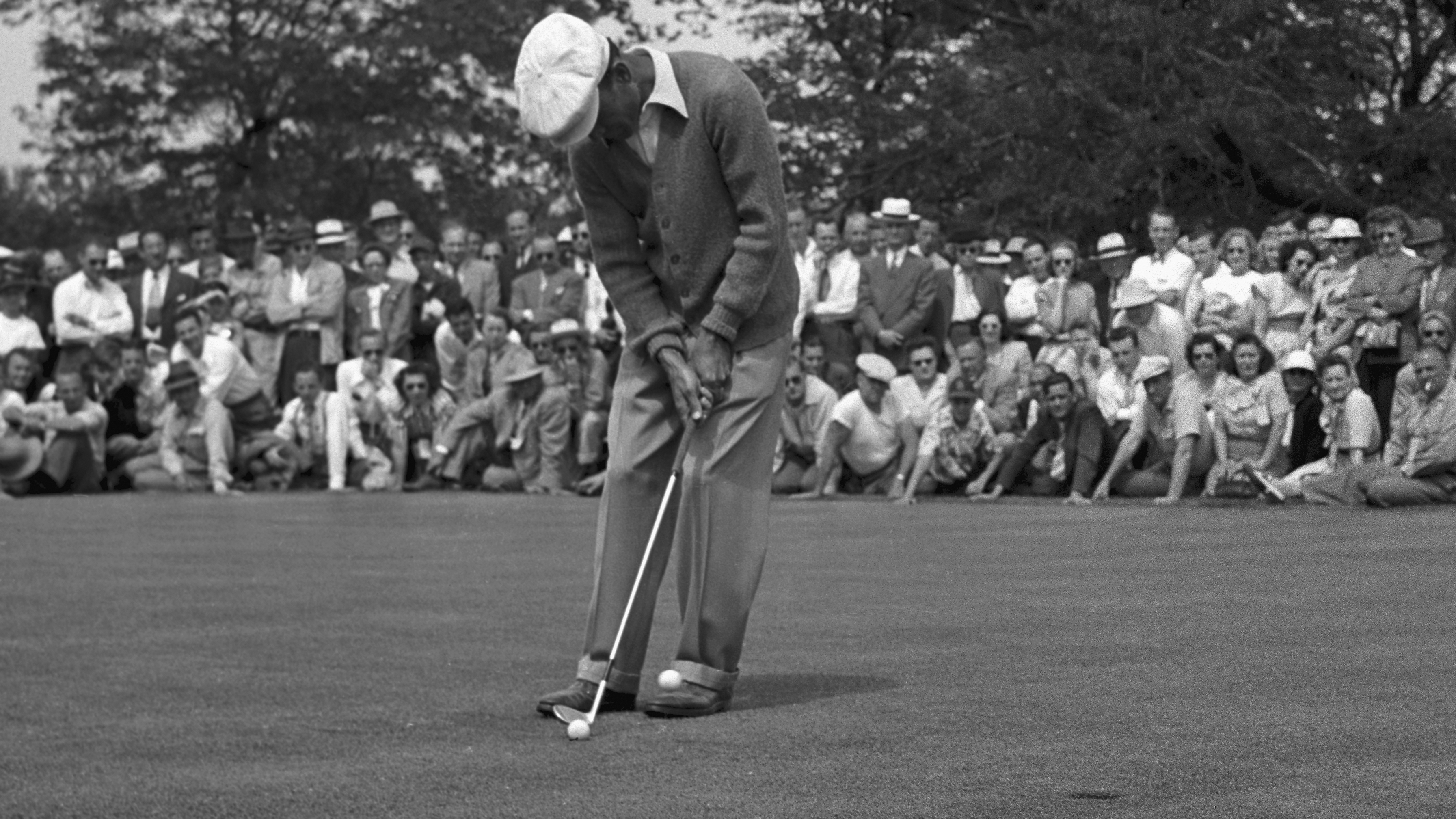What Is A Stymie In Golf?
A definition of the golfing term Stymie – What does it mean and why don’t we see them anymore?


A stymie is an old rule in golf that is no longer used. It was eliminated when the first joint USGA and R&A Rules of Golf came into effect in 1952.
Prior to those rules, if one player’s ball on the putting green interfered with another player’s line of putt, the interfering ball could only be marked if the two balls were within six inches of each other. If they were more than six inches apart, there was no provision for marking the ball nearer the hole and the player simply had to play around or over the interfering ball.
If a player found their ball’s path to the hole blocked by an opponent – they were stymied.
How Did The Stymie Originate?
Early rules of golf made provision for moving balls that were touching one another but not those which came to rest close to one another. In the late 18th century, if balls were very near to one another on the playing surface but not touching they simply had to be played as they lay.
Then a provision was made for moving balls that came to rest within six inches of one another and, in the 1830s, stymies were restricted to matches in which there was only one ball per side.
Stymies weren’t often a factor in Stroke Play, but they remained a part of Match Play through the early part of the 20th century.
The picture above shows Ben Hogan chipping over Mike Turnesa’s ball in the final of the 1948 PGA Championship. Getting himself out of a stymie. Hogan went on to win by 7&6.
Get the Golf Monthly Newsletter
Subscribe to the Golf Monthly newsletter to stay up to date with all the latest tour news, equipment news, reviews, head-to-heads and buyer’s guides from our team of experienced experts.
When Did Golf Get Rid Of The Stymie?
When the first joint rules released by the USGA and The R&A came into effect in 1952. In those rules, the lifting of a ball on the putting green was allowed when it was interfering with another’s line of putt, no matter the distance between the two balls.
After this the stymie was removed from competition golf but many continued to use the stymie in casual or bounce play.
The term stymie remains to describe a situation when your route may be blocked – a player might say they are “stymied behind a tree,” for instance.

Fergus is Golf Monthly's resident expert on the history of the game and has written extensively on that subject. He has also worked with Golf Monthly to produce a podcast series. Called 18 Majors: The Golf History Show it offers new and in-depth perspectives on some of the most important moments in golf's long history. You can find all the details about it here.
He is a golf obsessive and 1-handicapper. Growing up in the North East of Scotland, golf runs through his veins and his passion for the sport was bolstered during his time at St Andrews university studying history. He went on to earn a post graduate diploma from the London School of Journalism. Fergus has worked for Golf Monthly since 2004 and has written two books on the game; "Great Golf Debates" together with Jezz Ellwood of Golf Monthly and the history section of "The Ultimate Golf Book" together with Neil Tappin , also of Golf Monthly.
Fergus once shanked a ball from just over Granny Clark's Wynd on the 18th of the Old Course that struck the St Andrews Golf Club and rebounded into the Valley of Sin, from where he saved par. Who says there's no golfing god?
-
 The Last Time Rory McIlroy Won A Major (Prior To The 2025 Masters)....
The Last Time Rory McIlroy Won A Major (Prior To The 2025 Masters)....We wind the clock back to the year 2014, when Rory McIlroy was the heir-apparent to Tiger Woods
By Michael Weston Published
-
 I'm Thrilled For Rory McIlroy But Gutted For Class Act Justin Rose... I'd Love Him To Win Another Major
I'm Thrilled For Rory McIlroy But Gutted For Class Act Justin Rose... I'd Love Him To Win Another MajorJustin Rose pushed Rory McIlroy all the way in The Masters, and while I am super impressed by the Career Grand Slam, part of me is hurting for the Englishman...
By Barry Plummer Published